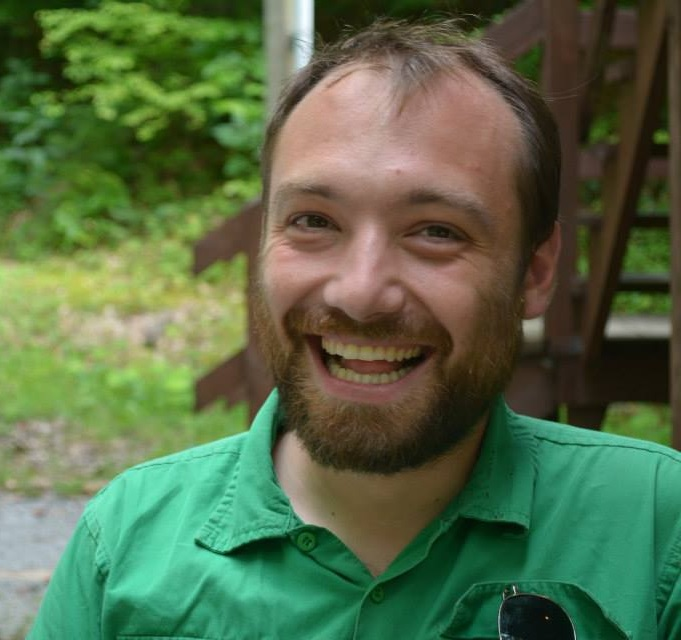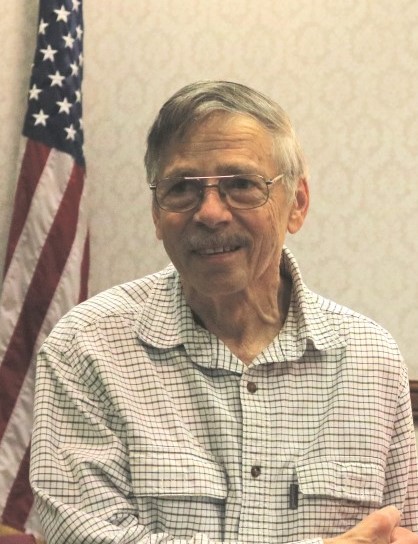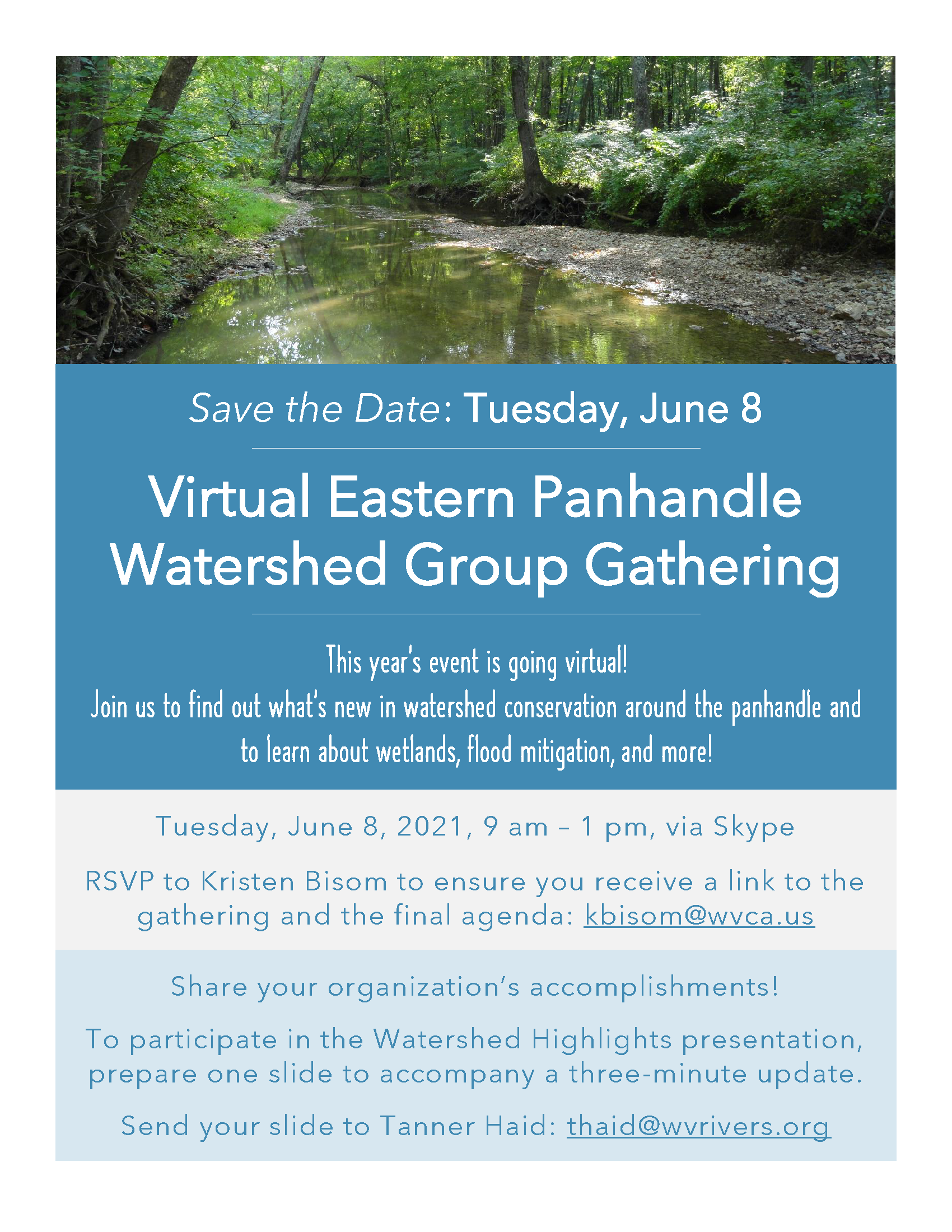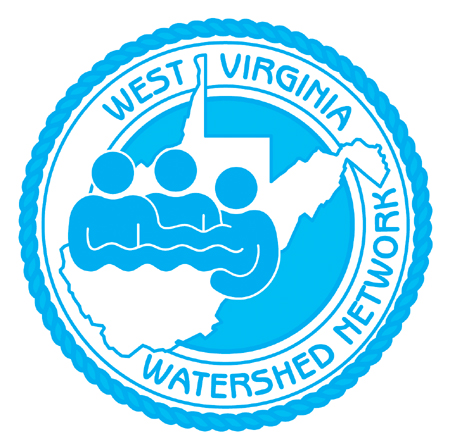| | WV WaterNet: Spring Edition |
| | WVDEP’s Save Our Streams Program Nets New Coordinator Seeks Volunteers Ready to Monitor Stream Health through Benthic Macroinvertebrate Surveys |
| The West Virginia Department of Environmental Protection’s (WVDEP) Watershed Improvement Branch welcomed Callie Cronin Sams as the new Save Our Streams (SOS) program coordinator in February. Callie brings with her six years of prior experience working with the WVDEP’s Youth Environmental Program (2011-2017), three years of grant writing and program development experience with the City of Buckhannon and Buckhannon Volunteer Center (2017 – 2021), volunteer time with the Buckhannon River Watershed Association, and a Master of Arts in Teaching in Biological Sciences from Miami University of Ohio and Project Dragonfly. |
|
|
| “Joining the Watershed Improvement Branch and the Save Our Streams program is a dream come true,” enthused Callie. “I look forward to following in the footsteps of field biologists such as former SOS coordinator and current WVDNR fish biologist Glenn Nelson; and Tim Craddock, the ultimate benthos expert, SOS program founder, and current Nonpoint Source Program Coordinator and SOS Supervisor. I am especially excited to work with teachers and watershed volunteers to develop an inquiry-based lesson plan and curriculum guide that utilizes a bioassessment approach to monitoring water quality while teaching STEM skills.” The mission of WV Save Our Streams is to promote the preservation and restoration of our state's waters by providing an understanding of their ecological integrity. This mission is accomplished by conducting workshops and training volunteers on how to monitor their local wadeable streams and rivers. “I am excited about the future of the WV Save Our Streams Program,” added Craddock. “Callie brings experience, energy, and passion. She has many ideas that will benefit and inspire citizen scientists, educators and many others interested in learning about the importance of our waters.” The presence or absence of indicator benthic macroinvertebrate species such as Ephemeroptera (mayflies), Plecoptera (stoneflies), and Trichoptera (caddisflies) provide clues to the relative ecological health of the stream. Following certification, volunteers conduct surveys, counts, and analysis of benthic macroinvertebrates, as well as chemical analysis and habitat assessment. Volunteer monitoring and citizen science efforts provide essential contributions to our understanding and protection of watersheds throughout West Virginia. Callie lives in Elkins and is based out of the WVDEP Office in Philippi. To get involved, visit the Save Our Streams website or email Callie at callie.c.sams@wv.gov. Please take this short survey to give your feedback on the program here. |
| | Friends of Deckers Creek Uses Video Conferencing to Reach Youth |
| These days you can catch news pieces about the impact of the last year, especially COVID-19, on all of us. A few of them talk about what came out of it that might actually be helpful in the future. Video-conferencing technology, and all we have learned to do with it, is usually at the top of that list. Many watershed groups, for example, Friends of Deckers Creek (FODC), have used video-conferencing as a new way to do outreach and education. Maya Mier-Thomas, a VISTA through the West Virginia Community Development Hub, led FODC’s effort. She got the idea during lunch break at the West Virginia Watershed Symposium while listening to moms talk about managing work and kids while home-bound for the pandemic. Maya figured she was good enough at computer stuff that she could set up some similar sessions for environmental education. Her plan was to mix crafts, a crucial tool for entertaining and educating young children, with some environmental education. She found many collaborators through the Watershed Symposium. Autumn Crowe and Tomi Bergstrom had a lot of knowledge about using Zoom. Tomi also connected her with WVDEP’s Youth Environmental Program, Linda Carnell, who is West Virginia Division of Forestry’s teacher for Project Learning Tree, as well as her own educational resources from Project WET and Wonders of Wetlands. Maya and FODC found several funding partners to support the program, including Your Community Foundation of North Central West Virginia, Arts Monongahela, The City of Morgantown, and the Douglas H. Tanner Memorial Fund for the Arts. |
|
|
|
|
| Recruiting kids was one of the hardest parts. With no regular contact with kids, it was hard to spread the word. FODC used their electronic mailing list as well as Facebook. They also posted an advertisement in the newspaper. By the time the three-day series began on March 22, which is World Water Day, Maya feared they were fighting against Zoom fatigue on the one hand and improving weather on the other. The actual event included three Zoom meetings in three days. Each lesson included some combination of lessons and crafts. Linda Carnell demonstrated how ridges and topography control how water flows across the landscape by sprinkling water on paper that had been crumpled and unfolded. Martin Christ used salt dough in a few different colors to show how geologic strata are arranged in the Deckers Creek Gorge. Tomi Bergstrom and Beth Henry Vance from WVDEP demonstrated how to “upcycle” an old t-shirt into a reusable bag and how to make a mobile of poetry about water, rivers, and streams. To get kids outside and away from the Zoom sessions, FODC also prepared activity bags and left them for pick-up at one site in Monongalia County and one site in Preston County. Activities included rain sticks, which come with a lesson about the importance of rain, items to make a water cycle bracelet, a small net with macroinvertebrate tokens “caught” inside, and an exercise to compare how much usable water there is on Earth to all the water on Earth. FODC considered the event a successful foray into video conference environmental education. For anybody trying it, they advise that you find good partners and get to work early on recruiting kids to attend. |
|
|
| | West Virginia Forms Flatwater Trail Commission |
|
|
| In 2020, the West Virginia Legislature formed the WV Flatwater Trail Commission. On February 5th of 2021, Governor Jim Justice selected five West Virginias to serve as the first members of the commission. The members are Chairman Bill Currey of Kanawha County, John Burchett of Mingo County, George Levitsky of Marion County, Amanda Pitzer of Preston County and John Wilson of Harrison County. These members will meet quarterly to catalogue existing trails that have been authorized by the state; improve, promote, and support flatwater trails; and provide technical assistance to newly developing flatwater trails in West Virginia. There are several things that must be in place for a water trail to be authorized, including, but not limited to: a beginning and end of a trail, appropriate launch sites with signage, and a working relationship with WVDNR for policing and maintenance of the trail. Commission Chairman Bill Currey says, “The support groups for the states existing Flatwater trails have worked hard for many years to create safe opportunities for visitors to fish, float and enjoy the many beautiful rivers of the state. They have created clearly defined trips, with signage to direct visitors to the beginning and end of float trips and they have provided printed maps and used social media to promote their trails. The expediential growth in Kayaking over the past 10 years is requiring existing trails to plan for larger parking lots, increased signage and all trails must provide increased safety plans to protect trail users on the water.” Flatwater Trails that have begun or have already attained authorization are listed below: - Upper Monongahela River Water Trail
- Elk River Water Trail
- Upper Cheat River Water Trail
- Guyandotte Water Trail
- Tug Fork Water Trail
- Walhonde Water Trail (Coal River System)
- Cacapon River Water Trail
- West Fork River Water Trail
- Greenbrier River Water Trail
- Mill Creek Water Trail
- Ohio River Water Trail
- Summersville Lake Water Trail
- Little Kanawha Water Trail
Partnerships and collaborations between water trails and watershed groups are already being made and both have a long-term goal to improve their waterways and advocate for clean water. If organizations or community members are interested in developing or sponsoring a water trail, they should reach out to the commission by email at flatwatertrailcommission@wv.gov. Their next meeting is on April 13 at 6:00 PM via Zoom. |
|
|
| | Help the Buckhannon River Watershed Celebrate 20 Years - Featuring Aloi & Richter |
|  | Dr. Joey Aloi will be the featured speaker at the Buckhannon River Watershed Annual Meeting. |
| Richter’s dedication to the BRWA has directly resulted in improved water quality in the Buckhannon River watershed. Richter and his wife, Marge, plan to move to Virginia as early as July of this year. Please join us to celebrate Paul’s service to the watershed and the community. Additionally, the Buckhannon River Watershed Association Board of Directors and the WVDEP Watershed Improvement Branch will provide an update on the association’s current activities, future plans, and a look back at some highlights of BRWA work during the past twenty years. Incorporated as a 501(c)3 nonprofit organization in 2001, the Buckhannon River Watershed Association promotes, protects, and improves the health of the watershed by engaging in educational and outreach activities, advocating for wise use and protection of water resources through science-based regulations, and implementing remediation projects in problem areas. Most recently, the association has successfully administered grant funding to construct acid mine drainage treatment sites in the Alton Ridge area. All interested individuals are welcome to participate in the BRWA activities. To join the meeting, please register in advance here. |
|
|
The Buckhannon River Watershed Association will hold its annual meeting at 6:30 p.m. on April 14, 2021, via Zoom. This year’s event will feature a lecture by Dr. Joey Aloi, Buckhannon native and current resident of Charleston, West Virginia. Aloi will present, “From Springs to Faucets: How Historic Transition Can Teach Us to Care for Our Water”. The lecture will explore the dynamic between the increased availability of tap water through municipal water systems during the late nineteenth century and the impact on mineral springs resort culture. With vast appreciation, the Association will also wish a fond farewell to Dr. Paul Richter as part of the event. Richter has served on the board since its inception in 2001, as a founding and integral member and later as the Chairperson. |
|  | Dr. Paul Richter founding member of the Buckhannon River Watershed Association |
|
|
|
|
| | Grant Corner: Consider a §319 Project for Your Watershed |
| West Virginia’s Nonpoint Source (NPS) Program provides funding for projects based on watershed based plans that attempt to address waters impaired by nonpoint pollution. Selection of projects and activities are driven by the 303(d) list, TMDL development as well as the goals and objectives of the NPS Program's management plan. These funds originate from the Clean Water Act §319 and are allocated to states and tribal communities annually, based on the Federal fiscal year. The most effective way to make long-term improvements is to start at the local level. WVDEP’s Watershed Improvement Branch has professionals with experience and knowledge to help guide local groups through the §319 processes. It is important to keep in mind that this is not a quick fix. It takes significant commitments and fortitude to stay on the road to stream recovery… In the end it will be worth it! Clean, safe water is our most important shared resource. To learn more, visit the website http://www.dep.wv.gov/nonpoint and send your questions to your regional Basin Coordinator and/or Nonpoint Source Program Coordinator. |
| |  | |
|
| | West Virginia Rivers Coalition
3501 MacCorkle Ave SE #129 | Charleston, West Virginia 25304
304-637-7201 | wvrivers@wvrivers.org |
| The WV WaterNet is made possible through an award of Environmental Protection Agency’s 319 funding awarded to the West Virginia Rivers Coalition by the West Virginia Department of Environmental Protection. |
|  | |
|
| |
|
|